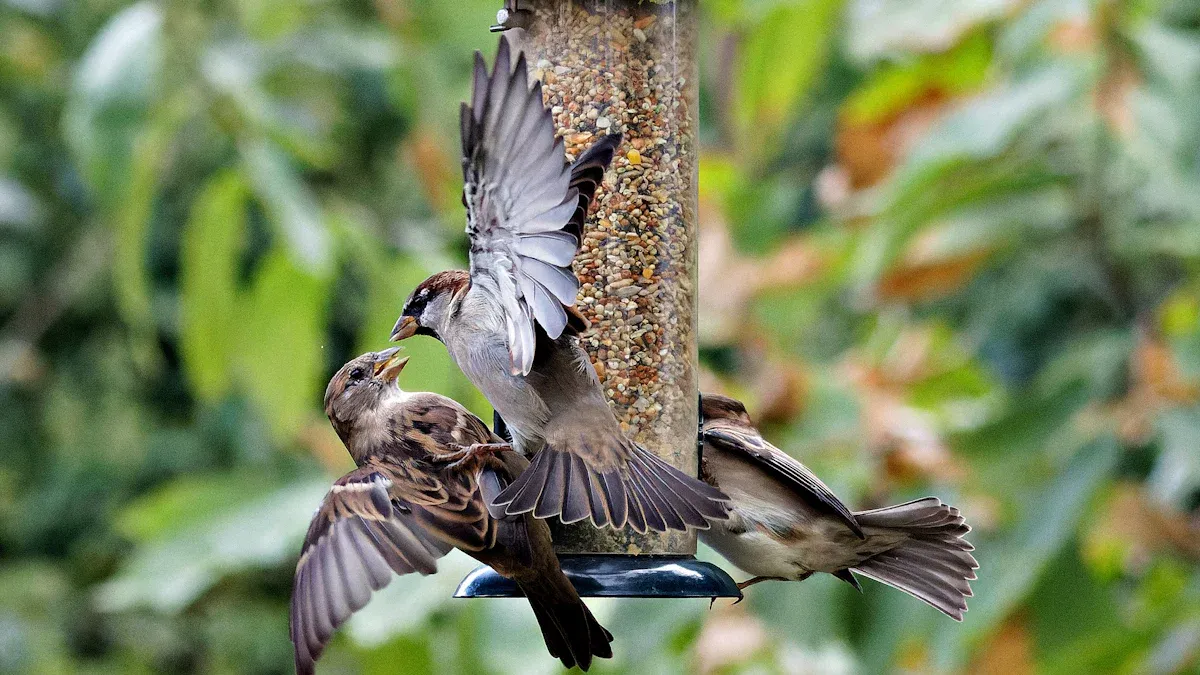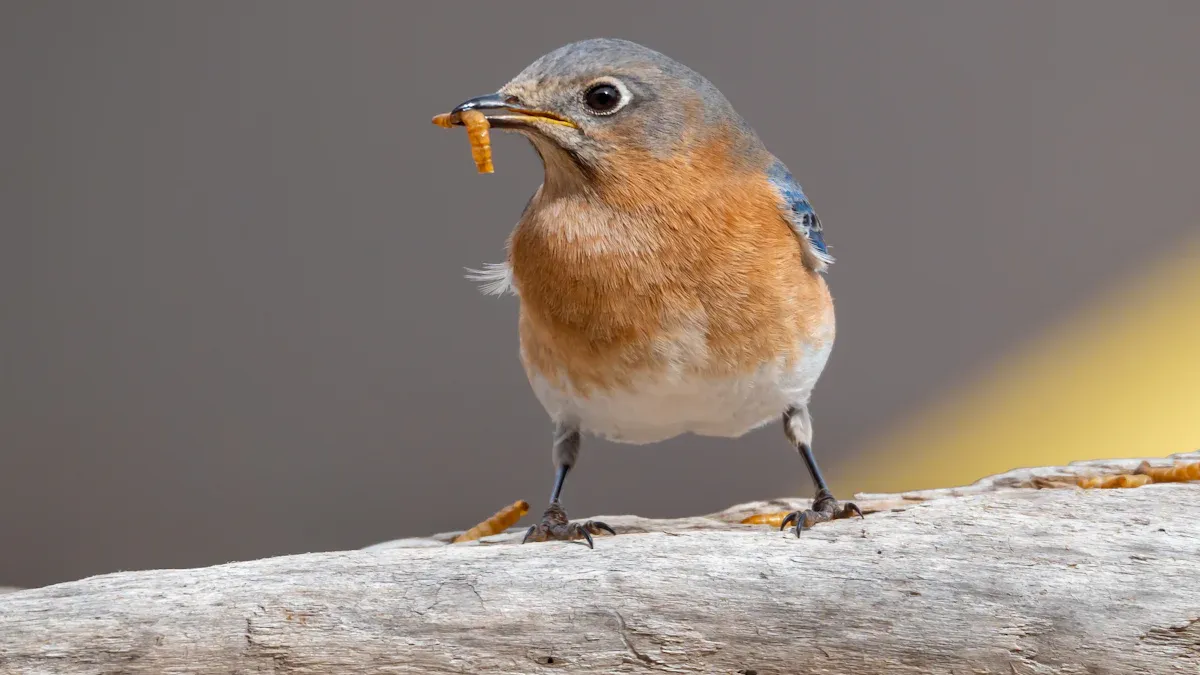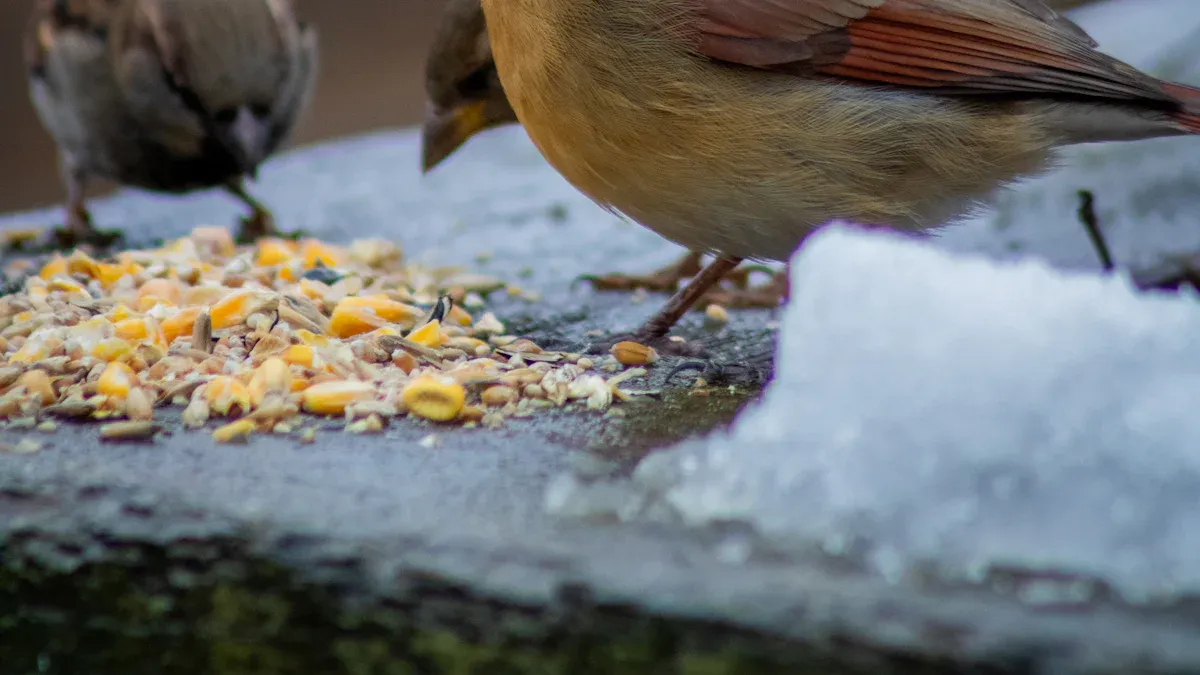
Birds love variety at the feeder. Dried mealworms for birds pack over 50% protein, 28% fat, and 6% fiber, making them a powerhouse snack. Many wild birds find these treats irresistible, especially when mixed with seeds. They support feather growth, egg production, and year-round health.
Key Takeaways
- Dried mealworms provide birds with high protein, fat, and fiber, supporting their health, feather growth, and energy needs all year.
- Adding mealworms to feeders attracts more bird species by matching their natural diet and instincts, especially insect-eating birds like robins and woodpeckers.
- Mix mealworms with seeds and use platform or bowl feeders to create an inviting feeding spot that keeps birds healthy and coming back.
Why Dried Mealworms for Birds Attract More Species

Nutritional Benefits: Protein, Fat, and Fiber
Birds need food that gives them energy and helps them stay healthy. Dried mealworms for birds offer a powerful mix of nutrients. They contain more than 50% protein, about 25-35% fat, and up to 9% fiber. These numbers show that mealworms give birds what they need to grow strong feathers, lay eggs, and stay active. The table below shows how dried mealworms compare to other animal protein sources:
| Nutrient Component | Dried Mealworm Larvae Content (%) | Fish Meal (%) | Meat Meal (%) | Poultry Meal (%) |
|---|---|---|---|---|
| Crude Protein | 46 – 52 | 65.5 – 73 | 65.5 – 73 | 65.5 – 73 |
| Crude Fat | 25 – 35 | 9.71 | 11.09 | 13.00 |
| Crude Fiber | Higher than other diets | N/A | N/A | N/A |
Dried mealworms also provide important minerals like calcium, phosphorus, sodium, manganese, and zinc. These nutrients help birds build strong bones and keep their bodies working well. Premium quality dried mealworms for birds are 100% natural and packed with vitamins and minerals. Many bird lovers notice that when they add mealworms to their feeders, they see more types of birds visiting.
Mimicking Natural Diets and Instincts
Wild birds eat insects as a big part of their diet, especially during spring and summer. Dried mealworms for birds closely match what birds find in nature. Studies show that when birds eat diets with dried mealworms, their bodies use the protein and fat just like they would from natural insects. For example, scientists have found that birds fed mealworm diets keep a healthy weight and get the right amino acids for their bodies. Another study looked at European starlings and found that the fat in their bodies matched the fat in their mealworm-rich diets. This means dried mealworms help birds meet their natural needs.
Birds like chickadees, cardinals, nuthatches, woodpeckers, and even bluebirds or robins often visit feeders with mealworms. These birds have strong instincts to look for insects. When they find dried mealworms, they see the feeder as a good food source. This is why adding mealworms brings more species to your garden.
Tip: Offering premium quality natural feed, like dried mealworms, can turn your backyard into a favorite spot for many insect-eating birds.
Year-Round and Seasonal Advantages
Dried mealworms for birds help birds in every season. In winter, birds need extra fat and protein to stay warm because natural food is hard to find. In spring, they need more energy for breeding and feeding their chicks. During summer, soaking dried mealworms can help birds stay hydrated when water is low. In autumn, birds eat more to build up fat for the cold months ahead. The table below shows how dried mealworms support birds all year:
| Season | Nutritional/Practical Benefit of Dried Mealworms for Birds |
|---|---|
| Winter | Provides essential fats and proteins to help birds maintain warmth when natural food is scarce. |
| Spring | Supplies extra nutrition needed for breeding and feeding young birds, supporting energy demands. |
| Summer | When soaked, helps birds stay hydrated during hot weather when water is limited. |
| Autumn | Aids birds in building fat reserves necessary for surviving the upcoming winter months. |
Premium quality dried mealworms for birds are especially helpful in winter, when birds need a calorie boost. They are also a favorite snack for robins, tits, starlings, and other UK garden birds. By offering these mealworms, bird lovers can attract a wider variety of birds and help them stay healthy all year.
How to Use Dried Mealworms for Birds with Seeds

Mixing Mealworms and Seeds for Maximum Appeal
Birds enjoy variety at the feeder. Mixing dried mealworms for birds with seeds creates a blend that attracts both seed-eaters and insect-lovers. Try adding a handful of mealworms to your regular seed mix. This simple step can bring robins, bluebirds, and even woodpeckers to your garden. Some people like to sprinkle mealworms on top of the seed to make them easy for birds to spot. Others mix them in so birds can hunt for their favorite treat.
Tip: Start with a small amount of mealworms and watch which birds visit. You can always add more if you see new species coming to your feeder.
Choosing Feeders for Dried Mealworms
The right feeder makes a big difference. Experts suggest using platform feeders or bowl feeders for dried mealworms. These feeders give birds plenty of space to land and pick out mealworms. Bowl feeders work well for mealworms, fruit, and suet. Many bowl feeders have covers to keep food dry and safe from larger animals. Tube feeders are great for seeds but not the best for mealworms. Clean feeders often to keep birds healthy.
Tips for Serving and Storing Dried Mealworms
Serving dried mealworms is easy. Place them in a shallow dish or mix them with seeds. During hot weather, soak mealworms in water for a few minutes to help birds stay hydrated. Store dried mealworms in a cool, dry place. Keep the bag sealed to stay fresh and tasty for birds.
Note: Premium quality dried mealworms for birds stay fresh longer and keep their nutrients when stored properly.
Adding dried mealworms for birds to feeders brings more species and healthier birds to any backyard. Studies show a 65% increase in bird diversity and better nutrition when people use mealworms and seeds. Many birds, like robins and blue tits, visit more often and thrive.
- Over 30 years, 21 out of 41 bird species increased at UK feeders.
- Songbirds had higher fat reserves and grew feathers faster with extra food.
FAQ
What birds like to eat mealworms?
Robins, bluebirds, tits, and starlings love mealworms. Many other insect-eating birds also visit feeders when they find this tasty treat.
Can dried mealworms be used all year?
Yes! People can offer mealworms in every season. Birds need extra energy in winter and during nesting time in spring and summer.
How should people store dried mealworms?
Keep mealworms in a cool, dry place. Use a sealed container or bag. This helps them stay fresh and safe for birds.


